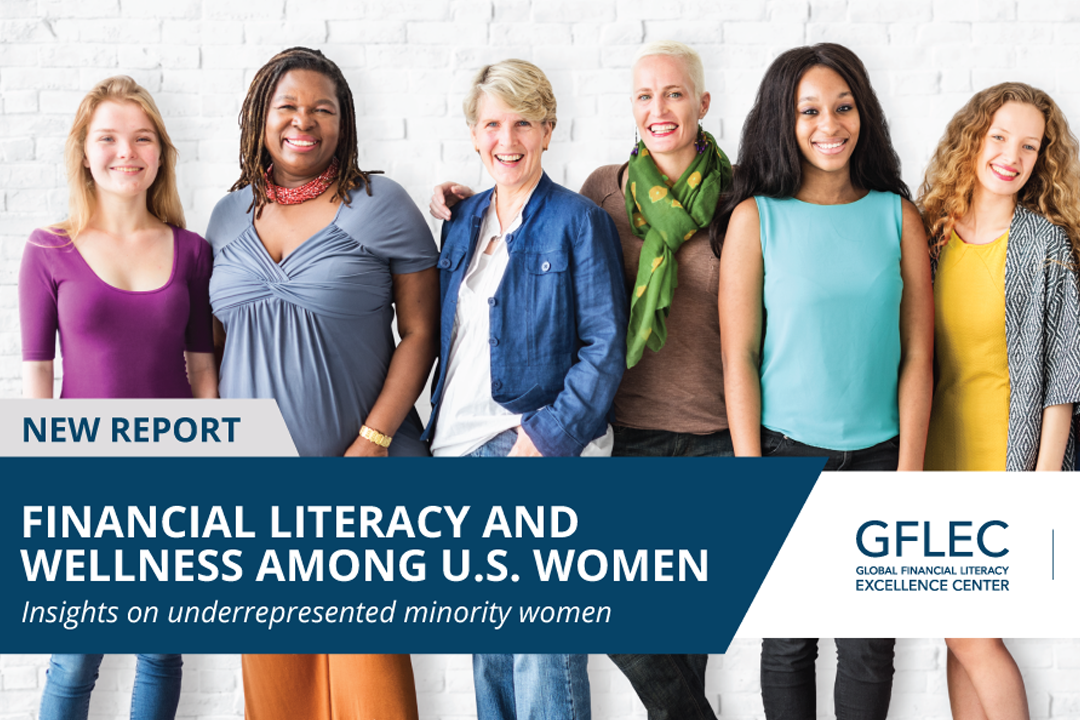By Briahnna Brown
After participating in a financial education workshop, George Washington University students who used Intuit’s Mint app were almost three times more likely to speak positively about their experience using budgeting technology than those who used Microsoft Excel, according to a new study from the Global Financial Literacy Excellence Center (GFLEC).
GFLEC, which is housed in the School of Business, also found that the number of students who felt confident in their ability to achieve a financial goal increased by 16 percentage points when students used Mint and decreased by 4 percentage points when using Excel.
The report recommends that financial education that targets youth should use engaging content and employ dynamic tools that allow students to personalize their financial education experience toward their individual interests.
Hallie Davis, a senior research associate with GFLEC, spoke with GW Today about this study and what it means for the future of effective financial education:
Q: What does previous research say about personal finance education and financial technology (FinTech)?
A: For financial education in general, there is growing research showing that it's effective in improving knowledge and behavior. With FinTech, this is something that definitely needs to continue to be explored to understand how it can be used within education and its influence on personal finance. Research hasn't really delved a lot into those two different topics of FinTech and personal finance, and this is definitely something of which a lot more could be understood.
Q: How did this study come to be? What made you approach this topic?
A: We work a lot within financial literacy and financial education. The central theme with financial education is understanding that more and more research has shown that it is effective in improving knowledge and behavior among participants. There's still a lot to be known as far as what is effective in education: what methods are most effective that are going to improve students' or improve participants' knowledge and their skills. This is certainly an interest that we want to continue to pursue. I think with Intuit, we were able to work with them by looking at their particular app, Mint, and understanding how technology can be used in financial education. How can it be leveraged? Is it effective in improving different student outcomes in financial education? We did this study at the beginning of last year--prior to the pandemic--and we were able to do a half-day workshop with students.
Q: What was the research experiment?
A: So, we have a group that participated and a group of students that did not so that could be our control group to see what was the effect of the workshop. And then, for those participating, we put them into two different groups. One was exposed to a spreadsheet tool, and the other was exposed to Mint. So, they have the same content, very similar workshop, but the only difference is the tool that was used. We can really see what that difference was between that spreadsheet and Mint. We can also see the difference of just participating in the workshop versus those who didn't.
Q: What were the findings of the study? Was there anything surprising?
A: Between those that participated in the group and those that didn't or in the workshop, we found that students who participated were more likely to feel prepared to talk to their parents about money matters, and they improved in their finance autonomy--feeling empowered to make decisions. While it's not behavior change, exactly, they are important pathways as students feel more empowered to talk about finance and to explore that topic. Something surprising that we found was how much students expressed that the content really needs to relate to them so they felt more engaged. They were more likely to engage with the topic and the content when they felt like it really related to them: someone that didn't have debt didn't necessarily relate to the debt topics because they thought, 'Well, I don't have any, I don't necessarily need to learn much about this topic.' What we found for the difference between those that had the spreadsheet versus those that had Mint is that those that participated or were exposed to Mint were more likely to have a positive experience using the tool, they felt more confident that they could achieve a financial goal and were more likely to record bills and expenses. We definitely saw some advantages of having that engaging tool versus that more static spreadsheet.
Q: What are the broader implications of these findings when it comes to personal finance education?
A: There are a lot of new opportunities with how technology can be used to engage students. I think this study helps advance that understanding, especially now with a lot of distance learning and with the economic downturn caused by COVID. As we look to recover, how do we help build financial resilience among people and effectively build that knowledge and those skills? Technology offers a way that we can reach different students in particular because young people need to build that knowledge before those consequential decisions are made.




